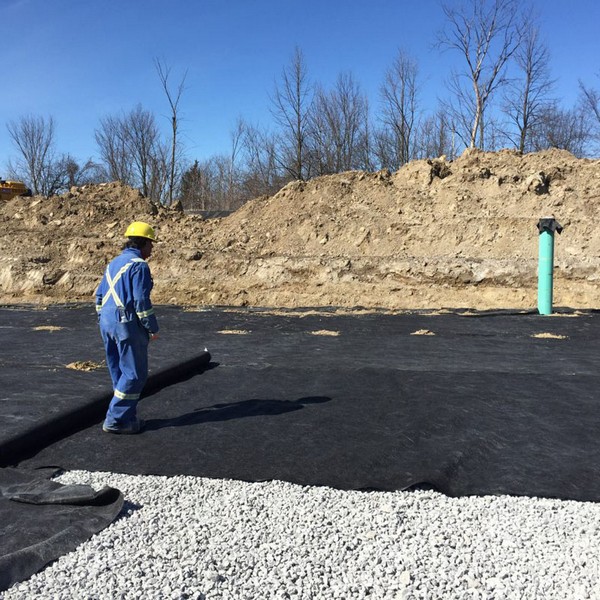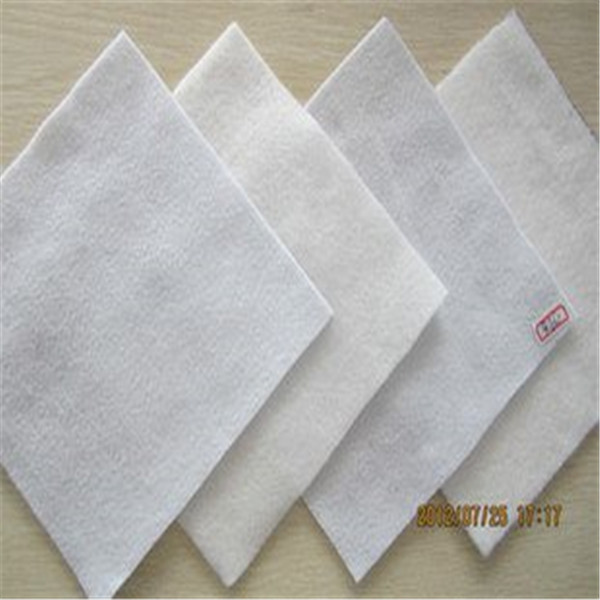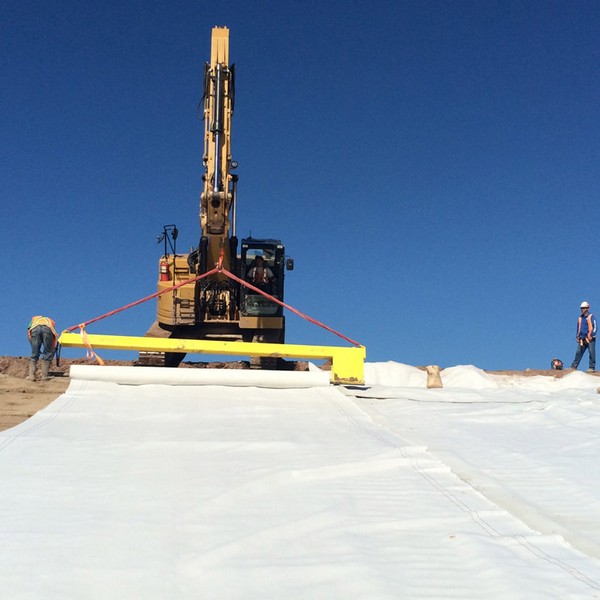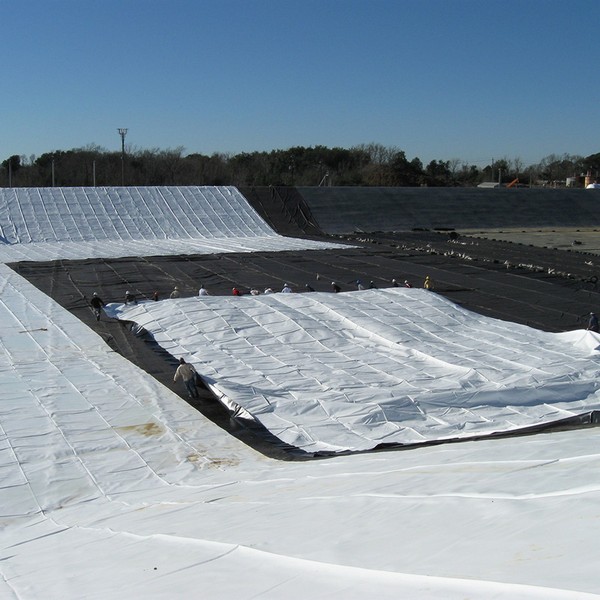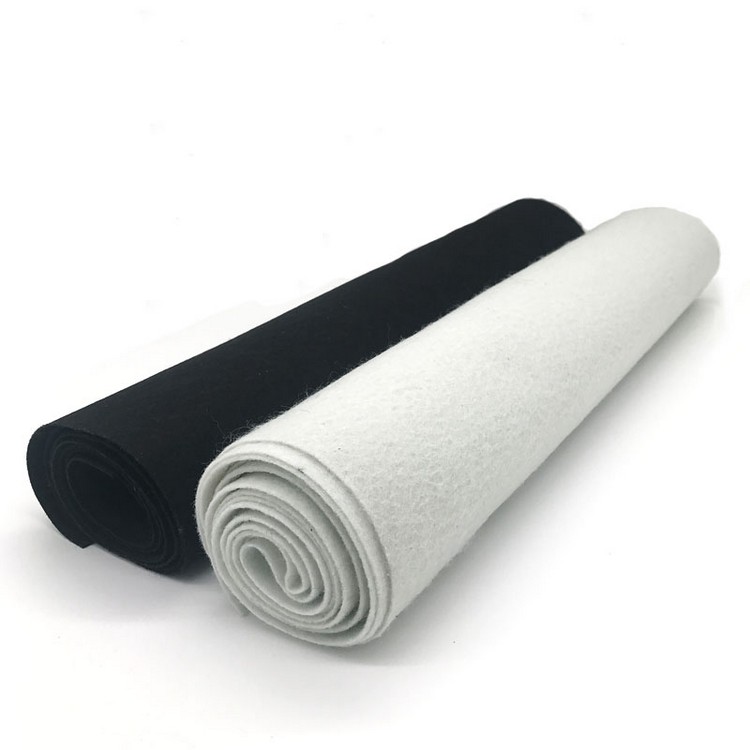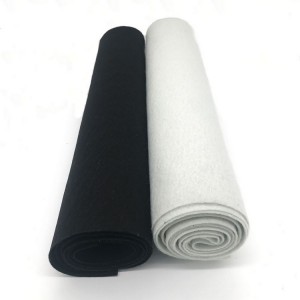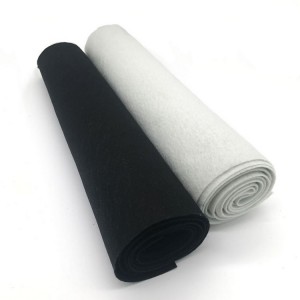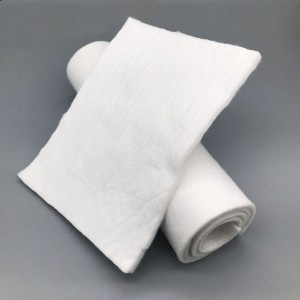Polypropylene needle punched non woven geotextile pp geotextile for road, dam , landfill
Product Features
2, Polypropylene non woven geotextile has good water conductivity. It can form drainage channels inside the soil and drain excess liquids and gases out of the soil structure.
3, Polypropylene non woven Geotextile are used to enhance the tensile strength and deformation resistance of soil, to enhance the stability of building structures, and to improve the quality of soil.
3, Effective diffusion, transmission or decomposition of concentrated stress can prevent soil from being damaged by external forces.
4, Prevent the mixing of upper and lower sandstone, soil and concrete.
5, The mesh is not easy to plug, due to the formation of amorphous fibrous tissue network structure has the flexibility and movement.
6, Polypropylene non woven geotextile has high water permeability and can maintain good water permeability under the pressure of soil and water.
Product Parameters
|
High Tensile polypropylene geotextile technical data |
|||||||||||
| Index Properties |
Unit |
Values |
|||||||||
|
TD-100 |
TD-200 |
TD-300 |
TD-400 |
TD-500 |
TD-600 |
TD-800 |
TD-1000 |
||||
| Mass per unit area |
g/m² |
100(1±5%) |
200(1±6%) |
300(1±6%) |
400(1±6%) |
500(1±6%) |
600(1±6%) |
800(1±6%) |
1000(1±6%) |
||
| Grip strength | MD |
N |
≥450 |
≥900 |
≥1250 |
≥1600 |
≥2000 |
≥2400 |
≥3000 |
≥3600 |
|
| CD |
≥450 |
≥900 |
≥1250 |
≥1600 |
≥2000 |
≥2400 |
≥3000 |
≥3600 |
|||
| Grip elongation | MD |
% |
50~90 |
50~100 |
|||||||
| CD |
50~90 |
50~100 |
|||||||||
| Trapezoid tear strength | MD |
N |
≥175 |
≥350 |
≥425 |
≥500 |
≥580 |
≥650 |
≥800 |
≥950 |
|
| CD |
≥175 |
≥350 |
≥425 |
≥500 |
≥580 |
≥650 |
≥800 |
≥950 |
|||
| CBR Bursting Strength |
KN |
≥1.25 |
≥2.5 |
≥3.5 |
≥4.3 |
≥5.3 |
≥6.2 |
≥7.1 |
≥8.0 |
||
| Breaking strength | MD |
KN |
≥5.5 |
≥11 |
≥16 |
≥22 |
≥28 |
≥34 |
≥45 |
≥55 |
|
| CD |
≥5.5 |
≥11 |
≥16 |
≥22 |
≥28 |
≥34 |
≥45 |
≥55 |
|||
| Enlogation at break | MD |
% |
40~65 |
50~80 |
|||||||
| CD |
40~65 |
50~80 |
|||||||||
| Puncture strength |
N |
≥220 |
≥430 |
≥665 |
≥900 |
≥1200 |
≥1430 |
≥1900 |
≥2350 |
||
| Thickness |
mm |
1.4~1.7 |
1.8~2.2 |
2.4~2.8 |
3.0~3.5 |
3.6~4.0 |
4.0~4.4 |
4.8~5.2 |
5.6~6.0 |
||
| Peel strength |
N/5 cm |
≥80 |
≥100 |
||||||||
| Resistance to acid(PP) |
% |
Retention rate of the breaking strength ≥90%,Retention rate of the enlongation at break ≥90% |
|||||||||
| Apparent Opening Size |
mm |
≤0.1 |
|||||||||
| Vertical permeability coefficient |
cm/s |
≤0.2 |
|||||||||
Application and After-Sales Service
Polypropylene non woven geotextile can be widely used in hydropower, highways, railways, ports, airports, sports venues, tunnels, coastal beaches, reclamation, environmental protection and other fields.
1. Environmental protection and sanitation (e.g. landfill, sewage treatment, poisonous and harmful substance treatment plant, dangerous goods warehouse, industrial waste, construction and blasting waste, etc.)
2. Water Conservancy (such as seepage prevention, leak plugging, reinforcement, seepage prevention vertical core wall of canals, slope protection, etc.
3. Municipal works (subway, underground works of buildings and roof cisterns, seepage prevention of roof gardens, lining of sewage pipes, etc.)
4. Garden (artificial lake, pond, golf course pond bottom lining, slope protection, etc.)
5. Petrochemical (chemical plant, refinery, gas station tank seepage control, chemical reaction tank, sedimentation tank lining, secondary lining, etc.)
6. Mining industry (bottom lining impermeability of washing pond, heap leaching pond, ash yard, dissolution pond, sedimentation pond, heap yard, tailings pond, etc.)
7. Agriculture (seepage control of reservoirs, drinking ponds, storage ponds and irrigation systems)
8. Aquaculture (lining of fish pond, shrimp pond, slope protection of sea cucumber circle, etc.)
9. Salt Industry (Salt Crystallization Pool, Brine Pool Cover, Salt geomembrane, Salt Pool geomembrane)
